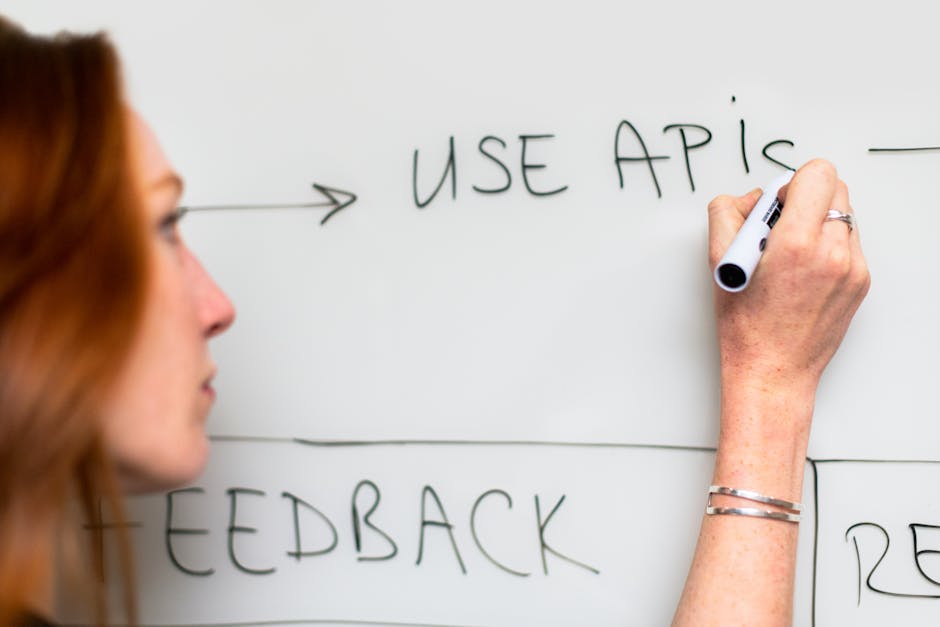Understanding RESTful API Design
You’re about to embark on the world of RESTful API design, where scalability, statelessness, and clarity are key. A well-designed API should handle increased load without breaking a sweat, thanks to statelessness and scalability considerations. Resources are organised in a hierarchical structure, with each self-contained unit identifiable by a unique URI. JSON is the serialisation format of choice, and consistency in request and response formats is vital. You’re just scratching the surface of RESTful API design – and as you explore further, you’ll uncover more strategies for building a seamless user experience.
Key Takeaways
• A scalable API design considers increased load without sacrificing performance, ensuring efficient handling of growing traffic and user bases.• A stateless API design allows for better scalability, as each request contains all necessary information, and the API doesn’t store client information.• A solid API architecture organises resources in a hierarchical structure, enabling easy navigation and understanding of relationships between resources.• Clear and consistent request and response formats, such as JSON, ensure seamless communication between the API and users, reducing integration issues.• Well-designed API endpoints with descriptive names, consistent naming conventions, and concise structures ensure a seamless user experience and effective API governance.
Key Principles of RESTful Design

When designing a RESTful API, you’ll want to adhere to six fundamental principles that guaranty your API is scalable, flexible, and easy to maintain.
These principles will help your API handle a growing user base and increasing traffic without breaking a sweat. Scalability considerations are vital here, as you’ll want to design an API that can effortlessly handle increased load without sacrificing performance.
One of the most critical principles is statelessness, which means that each request from the client contains all the information necessary to fulfil that request.
This is essential because it allows your API to scale more efficiently, as each request is independent of the previous one. The importance of statelessness can’t be overstated, as it enables your API to handle a high volume of requests without getting bogged down.
API Architecture and Resources

You’ll need a solid API architecture to support your stateless design, and that starts with organising your API into resources that make sense for your users.
Think of resources as nouns – they’re the things your API is designed to manage, like customers, orders, or products. Each resource should be a self-contained unit, with its own unique identifier (URI) and a clear set of actions that can be performed on it (like CRUD operations).
As you design your resource hierarchy, consider how they relate to each other. For example, an order resource might’ve a nested customer resource, and a product resource might’ve a nested inventory resource.
This hierarchical structure helps users navigate your API and understand the relationships between resources.
In a microservices architecture, each resource might be owned by a separate microservice, which communicates with other microservices to fulfil requests. Microservices integration can get complex, but a well-designed resource hierarchy helps simplify the interactions between services.
Request and Response Formats

As you craft your API’s request and response formats, clarity and consistency are key to ensuring seamless communication between your API and its users.
You want to make it easy for them to understand what they’re getting and what they need to send. That’s where JSON serialisation comes in – it’s the most widely-used format for API communication, and for good reason.
JSON (JavaScript Object Notation) is lightweight, easy to read and write, and language-agnostic, making it the perfect choice for APIs.
When it comes to sending and receiving data, you’ll also want to weigh the importance of data compression.
By compressing your data, you can reduce the size of your payload, making it faster to transmit and process. This is especially important when dealing with large datasets or high-traffic APIs.
Popular compression algorithms like Gzip and Brotli can drastically reduce the size of your data, making it more efficient to transfer.
When choosing your request and response formats, remember that consistency is key.
Stick to a single format throughout your API to avoid confusion and make it easier for users to integrate with your API.
API Endpoint Design Best Practises

Now that your API’s request and response formats are squared away, it’s time to design API endpoints that are intuitive, scalable, and easy to use, starting with a few guiding principles.
A well-designed API endpoint is essential for a seamless user experience and effective API governance.
When designing your API endpoints, keep the following best practises in mind:
Use nouns, not verbs: Endpoint names should be descriptive and indicate the resource being manipulated. For instance, /users instead of /getUser.
Keep it consistent: Establish a consistent naming convention throughout your API to avoid confusion.
Be concise: Aim for short, memorable endpoint names that clearly convey their purpose.
Error Handling and Debugging

When your API throws a tantrum, spewing out cryptic error messages like a toddler having a meltdown, it’s your job to calm the storm and debug the issue efficiently. You’re the adult in the room, after all!
To do this, you need a solid error handling strategy in place. This means returning meaningful error codes that give you (and your users) a clear idea of what went wrong. It’s not about being vague; it’s about being helpful.
Think of error codes as a treasure map, guiding you to the root of the problem. A 404 error, for instance, tells you that the requested resource can’t be found. A 500 error, on the other hand, indicates a server-side issue. With error codes, you can pinpoint the problem and start debugging.
Speaking of which, having the right debugging tools in your arsenal is essential. Tools like Postman, Fiddler, or even browser extensions like Chrome DevTools can help you inspect requests, analyse responses, and identify bottlenecks.
Conclusion
You’ve made it to the end of this RESTful API design journey, and surprisingly, you’re still awake. Congratulations!
You’ve mastered the art of not falling asleep while reading about API architecture, request formats, and error handling.
Now, go forth and design APIs that don’t make developers want to pull their hair out.
Remember, a well-designed API is like a work of art – except it’s less pretentious and actually useful.
Contact us to discuss our services now!
